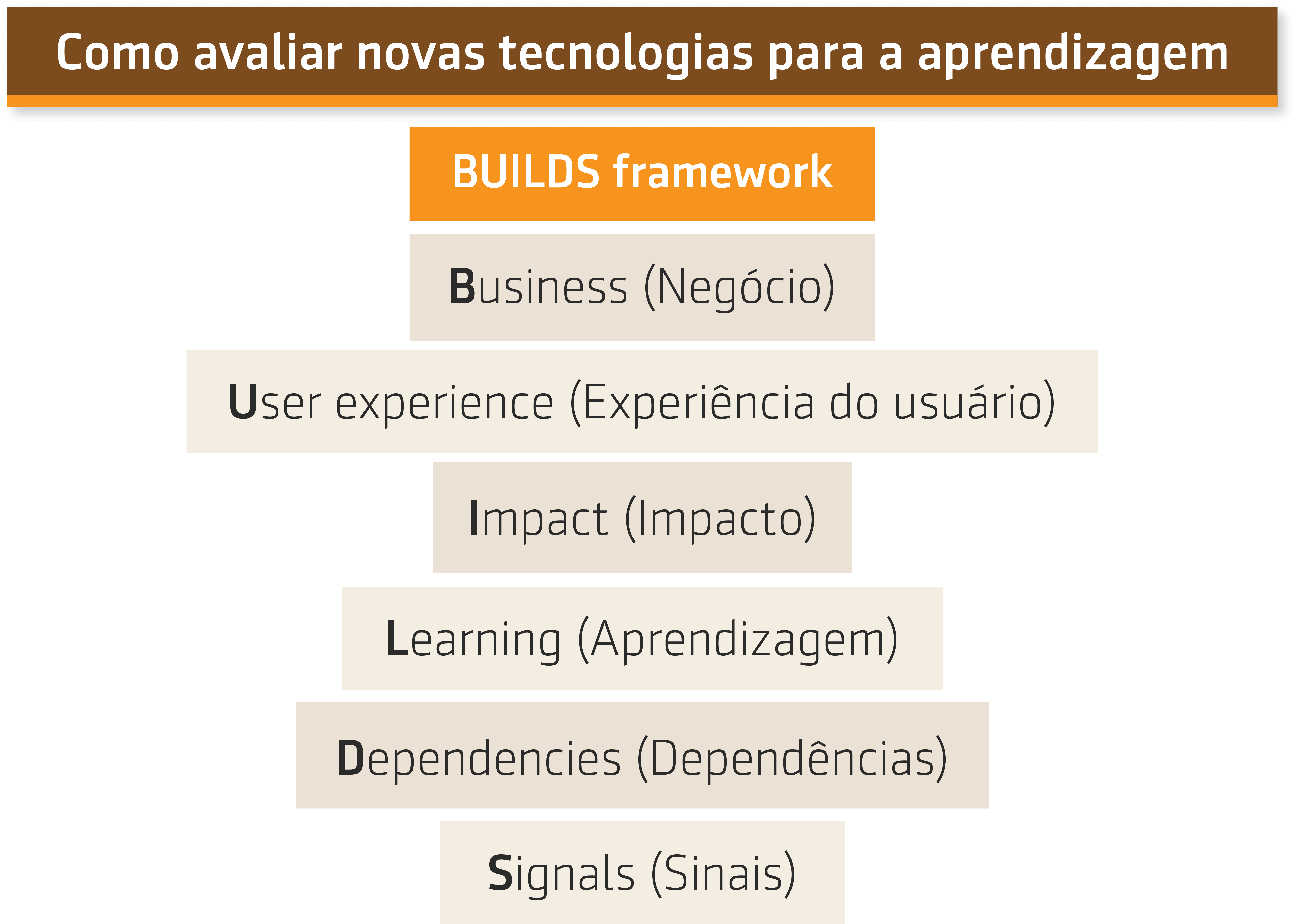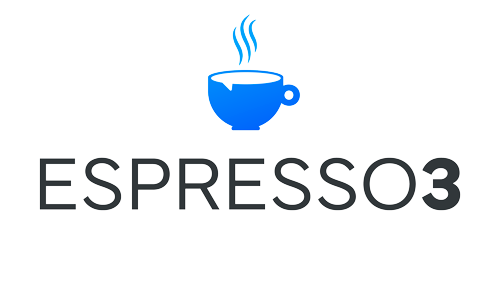We’re back and my next guest is Chad Udell. He wrote the book “Shock of the New“ and we’ll discuss here ways to evaluate new technologies. I’m Wagner Cassimiro and this is the Espresso3.
How should we evaluate new technologies?
Well. I’d like to think that when we’re evaluating new technologies, specifically for the learning and development marketplace, we have to acknowledge that there will be some technologies that win and some technologies that will lose. And there’s an inevitability that technology is going to continue to advance and the there will always be new technologies. Therefore, we have to be adaptable and flexible in how we take a look at how they can be used within our workplace.
In creating the Shock of the New, what we’ve done is attempt to create a framework that helps you in that evaluation process using a replicable rubric that can be used across any variety of different technologies, regardless if they’re new, here, or if they’re on the horizon, five or ten years from now.
Could you give an example?
Sure!
I think a lot of people, right now, are probably coming to grips and trying to understand how to use augmented reality in their workplace. So, in the book we provide a few different examples on how to use the BUILDS framework.
One of the case studies that we actually walked through is augmented reality. Helping people understand how to leverage the BUILDS framework which does account for the Business value (B) of the technology, the User experience (U) that the technology offers, the Impact (I) that technology will have, both in your organization, but also at a societal level. The Learning (L) models that it supports, whether it be self-regulated, self-directed, social, inactive, contextual, so on and so forth. The Dependencies (D) that might have to be put in place, as well as the Signals (S) that we’re seeing in the broader marketplace.
These could be research projects that maybe, perhaps, government organizations that are currently issuing grants and seeking solutions on. Or it could be venture capitals flowing in to a particular area and there’s a lot of products that are hitting that marketplace.
When we take a look at something like augmented reality it’s very clear that augmented reality (AR) offers a tremendous opportunity to revolutionize how performance support is performed. It, also, can be a very personal User experience, meaning, is in your particular field of view. But it can, also, be a shared experience as well. I can have an AR experience and we could be looking at something that’s actually in front of us, that doesn’t technically exist in a true physical format. This is a brand-new way of interacting with content. Very tremendous opportunities there.
From an Impact perspective, what will this do? How will people get their work done? What will be, when we’re walking down the street and everybody has a pair of smart-glasses or some sort of screen in front of them that is allowing them to see artifacts that don’t actually exist in the real world?
And what types of Learning models does AR support? Obviously, it’s highly contextual. It should be used in a situation perspective. So, it doesn’t lend itself to a great classroom experience, but it’s a tremendous learning tool if you’re out there in the field maybe even as a technician or working on a piece of hardware, or doing some repairs or something along those lines.
Some of the Dependencies that are in place, or need to be put in place I should say for augmented reality, have already been taken care of, maybe because of some the mobile technologies that we’ve been wrestling with for the last ten years. We know how to acceptably use policies, we have mobile device management systems to get software and hardware out into the hands of our learners, and so on and so forth.
But, there are other dependencies that we don’t also control, as well. Those are banking the bar to entry for augmented reality far easier. Processing power on phones, better cameras and optics on smart-glasses and other devices are all kind of making it easier to get there.
And of course, from the Signals perspective, Augmented Reality is very, very hot, right now. A lot of investment, a lot of products, a lot of popular games, a lot of things that whether be, Pokemon Go or whatever next big Augmented Reality virtual experience is going to be, are certainly making ways and making a lot of news headlines.
Nice. I have a last question. After purchasing a new technology, what do we need to do to take the best of it?
I think that when you purchase the technology, you make that available to your workforce, that’s just a very small part of the overall battle. We want to create and enable a culture inside of our organization that’s willing to embrace and use it.
We want to encourage research and development in it. We want to make it available to as many people inside of the workplace that might be able to take advantages as possible. We want to have open and candid ideation sessions, so we can talk about how this might potentially impact our business or change the way that people learn. And, I think, more importantly, we just need an air of openness and willingness to try some new things.
OK, thank you!
If you want to find more information, you can have it in this book.
Thank you!

TRADUÇÃO
Como avaliar novas tecnologias para a aprendizagem – ATD Conference, 2019
Estamos de volta e meu próximo convidado é Chad Udell. Ele escreveu o livro “Shock of the New“ e discutiremos aqui maneiras de avaliar novas tecnologias. Eu sou Wagner Cassimiro e este é o Espresso3.
Como devemos avaliar novas tecnologias?
Bem. Eu gostaria de pensar que, quando estamos avaliando novas tecnologias, especificamente para o mercado de treinamento e desenvolvimento, temos que reconhecer que haverá algumas tecnologias que vencerão e algumas tecnologias que perderão. E há uma inevitabilidade de que a tecnologia continuará avançando e sempre existirão novas tecnologias. Portanto, temos que ser adaptáveis e flexíveis na forma como observamos como elas podem ser usadas em nosso local de trabalho.
Ao criar o Shock of the New, o que fizemos foi tentar criar um framework que o ajude nesse processo de avaliação usando uma convenção replicável que pode ser usada em uma variedade de tecnologias diferentes, independentemente de serem novas, aqui, ou de estarem no horizonte, daqui a cinco ou dez anos.
Você poderia me dar um exemplo?
Claro!
Acho que muitas pessoas, no momento, estão provavelmente se aproximando e tentando entender como usar a realidade aumentada em seu local de trabalho. Então, no livro nós fornecemos alguns exemplos diferentes de como usar o BUILDS framework.
Um dos estudos de caso pelos quais passamos é a realidade aumentada. Ajudar as pessoas a entender como alavancar o BUILDS framework que considera o valor de Negócio da tecnologia (B: Business), a Experiência do usuário (U: User experience) que a tecnologia oferece, o Impacto (I: Impact) que a tecnologia terá, tanto na sua organização, como também no nível social. Os modelos de Aprendizagem (L: Learning) que ela apoia, seja ela autorregulada, autodirigida, social, inativo, contextual, e assim por diante. As Dependências (D: Dependencies) que devem ser postas em prática, bem como os Sinais (S: Signals) que estamos vendo no mercado mais amplo.
Estes podem ser projetos de pesquisa que talvez, organizações governamentais estejam atualmente oferecendo investimentos e buscando soluções. Ou pode ser venture capitals indo para uma área específica e muitos produtos que estão chegando nesse mercado.
Quando observamos algo como realidade aumentada (RA), fica muito claro que a ela oferece uma tremenda oportunidade para revolucionar a forma como o suporte ao desempenho é realizado. Também pode ser uma experiência de Usuário muito pessoal, ou seja, está em seu campo de visão específico. Mas também pode ser uma experiência compartilhada. Eu posso ter uma experiência de RA e poderíamos estar olhando para algo que está realmente na nossa frente, que tecnicamente não existe em um formato físico real. Esta é uma maneira nova de interagir com o conteúdo. Muitas oportunidades tremendas aí.
De uma perspectiva de Impacto, o que isso fará? Como as pessoas farão seu trabalho? Como será, quando estivermos andando na rua e todos tiverem um par de óculos inteligentes ou algum tipo de tela na frente deles lhes permitindo ver artefatos que na verdade não existem no mundo real?
E que tipos de modelos de Aprendizagem a RA suporta? Obviamente, é altamente contextual. Deve ser usado em uma perspectiva de situação. Então, não funciona para uma grande experiência de sala de aula, mas é uma tremenda ferramenta de aprendizagem se você estiver no campo ou até como técnico ou trabalhando em um hardware, ou fazendo reparos ou algo nessa linha.
Algumas das Dependências que estão em vigor, ou que precisam ser postas em prática, devo dizer para realidade aumentada, já foram atendidas, talvez por causa de algumas das tecnologias móveis com as quais temos lidado nos últimos dez anos. Sabemos como usar políticas de forma aceitável, temos sistemas de gerenciamento de dispositivos móveis para colocar software e hardware nas mãos de nossos aprendizes e assim por diante.
Mas há outras dependências que também não controlamos também. Aquelas que estão tornando a entrada da realidade aumentada muito mais fácil. O poder de processamento em telefones, câmeras e óticas melhores em óculos inteligentes e outros dispositivos facilitam chegar lá.
E claro, da perspectiva de Sinais, a Realidade Aumentada está muito, muito quente agora. Muitos investimentos, muitos produtos, muitos jogos populares, muitas coisas, seja Pokemon Go ou qualquer outra próxima grande experiência virtual de Realidade Aumentada, certamente estão criando caminhos e gerando muitas notícias.
Legal. Eu tenho uma última pergunta. Depois de comprar uma nova tecnologia, o que precisamos fazer para tirar o melhor proveito dela?
Eu acho que quando você compra a tecnologia, você a disponibiliza para a sua força de trabalho, isso é apenas uma parte muito pequena da batalha geral. Queremos criar e possibilitar uma cultura dentro de nossa organização de que esteja disposta a adotá-la e usá-la.
Queremos incentivar a pesquisa e o desenvolvimento nela. Queremos disponibilizá-la para o máximo pessoas dentro do local de trabalho que possam aproveitar as suas vantagens. Queremos ter sessões abertas e sinceras de ideação, para que possamos conversar sobre como isso pode afetar potencialmente nossos negócios ou mudar a forma como as pessoas aprendem. E, mais importante, acho que precisamos apenas de um ar de abertura e disposição para experimentar algumas coisas novas.
OK, obrigado! Se você quiser encontrar mais informações, você conseguirá neste livro.
Obrigado!

